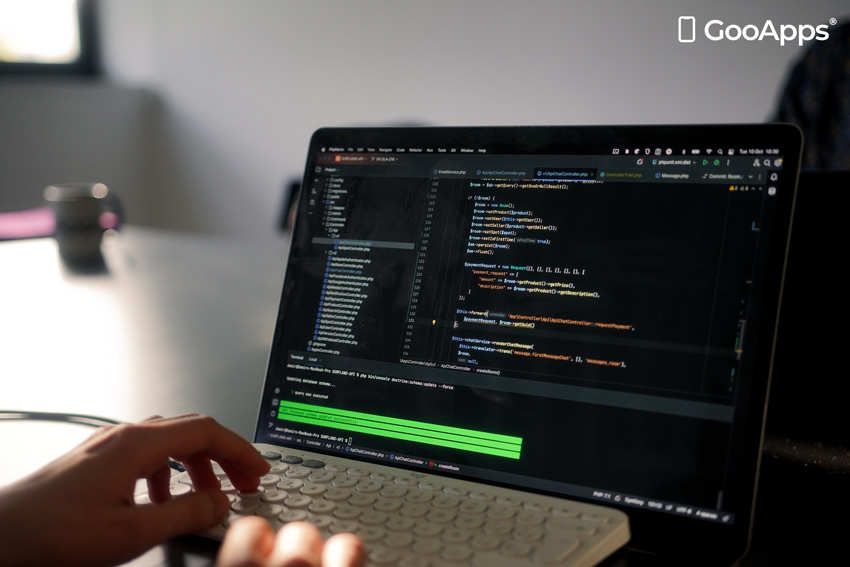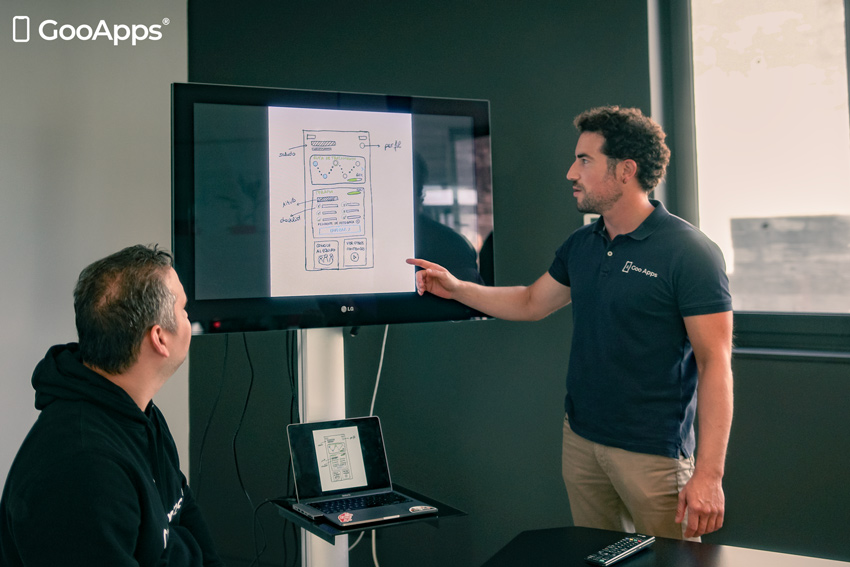
23/04/2024

Mobile applications have become tools that we regularly use in our day-to-day lives. Behind every successful app, there is code that functions impeccably, ensuring a smooth user experience, as well as the security and reliability that users and businesses expect. To verify that an app does not have flaws or design errors, there is a mobile application code audit, designed to identify and propose a correction plan for hidden issues that could compromise the integrity and performance of an application.
A code audit is a thorough evaluation that encompasses aspects such as security, scalability, or accessibility, among many others, analyzing whether the application meets the expected requirements and is also prepared to adapt to future needs. This critical process can uncover security vulnerabilities, performance issues, and other problems that, if left unresolved, could result in serious consequences for both users and developers, including legal and financial risks, as well as damage to brand reputation.
In this article, we will explore in detail what a code audit is, its importance in the life cycle of a mobile app, and how it can be key to avoiding legal, financial, and reputational issues, thus protecting the value and viability of your project in the long term. Join us throughout this article to discover how a meticulous code audit can positively change the future of your application.
A code audit is, essentially, a detailed and systematic review of the source code of a mobile application. This process focuses on examining every line of code to identify errors, security vulnerabilities, and any other elements that could compromise the quality, functionality, or security of the app. But why is this process so important in the life cycle of an application?
First, understanding the concept of a code audit involves recognizing that an app’s source code is the backbone on which the entire user experience is built. Just as a building requires a solid structure to stand, an application needs solid, error-free source code to function correctly. However, the importance of a code audit goes beyond just error detection.
A code audit is an investment in the quality and sustainability of the project. Detecting and correcting security flaws, accessibility issues, and ensuring scalability from the early stages avoids high costs and complex reprogramming processes in the future, thus helping to maintain a good brand reputation and retaining users by delivering a safe, accessible, and efficient experience. In this context, a code audit emerges not only as a good practice but as a crucial element for the success and longevity of your mobile application.

Auditing the code of a mobile application is a comprehensive analysis that covers various critical areas, each of which plays a fundamental role in the performance, security, and final usability of the app. But what do we really look for during a code audit? What are those key aspects that deserve our attention and why?
The answer to these questions leads us to explore five essential areas: from security to accessibility, through server architecture, stress testing, and finally, the scalability of the application. Each of these components is inspected down to the last detail, seeking to identify problems and provide a clear action plan towards effective solutions that ensure the app’s optimal functioning.
This audit process is an in-depth evaluation that requires expert knowledge in software development and specific know-how of the best practices in the industry. In the following sections, we will break down each of these key aspects, explaining what we specifically look for, the common problems we encounter, and how we address these aspects to transform a good app into an excellent one.
The most critical aspect of any code audit is the security analysis. When analyzing the source code of an application, our first and foremost goal is to identify any vulnerabilities that could compromise both the security of the users and the personal data stored and transmitted by the app.
This three-dimensional approach to security (caring for data at rest, user authentication, and the security of data transmission) forms the foundation on which we build a secure and reliable mobile application environment. Identifying and addressing these critical aspects is essential to protect against current risks and establish a solid defense against digital threats that constantly appear and evolve.
An uncompromising aspect in the development of robust, efficient, and easily maintainable applications is adherence to good programming practices. During our code audit, we pay special attention to evaluating how the app’s development aligns with these fundamental principles, aiming to optimize both the performance and maintainability of the application.
In any mobile application that aims for success and is designed to grow, a solid and scalable architecture must have been developed. This should support both the current state of the application and also anticipate and facilitate its growth and adaptation to future needs. During our code audit, we focus on analyzing the application’s architecture, assessing its ability to scale and evolve along with the growth in the number of users and their changing demands.
Through this analysis, we aim to ensure that the application’s architecture meets current needs and possesses the flexibility and robustness necessary to grow in the future. Well-thought-out architecture and scalability are undoubtedly fundamental pillars for the long-term success of any mobile application.

Ensuring that mobile applications are accessible to all users, including those with disabilities, is an indispensable responsibility. Accessibility is a matter of empathy and equity, as well as a legal requirement in app development within the European Union. Our code audit delves into how the application addresses accessibility, ensuring compliance with current standards and thus providing an inclusive user experience.
By ensuring we have an accessible mobile application, we are expanding its reach to a broader audience and reinforcing its quality and usability for all users. This commitment to accessibility reflects an understanding of the importance of technology in social inclusion and respect for all users, regardless of their physical or cognitive abilities.
The durability and economic efficiency of a mobile application are aspects that cannot be overlooked. In our code audit, stress testing and cost analysis hold prominent places, verifying that the application can handle high workloads and remain within an optimal and sustainable cost framework.
Combining stress tests with a detailed cost analysis provides a comprehensive view of how the application behaves under extreme conditions and how its resources can be managed more efficiently. This dual approach is designed to enhance the robustness and reliability of the application, as well as ensure its long-term economic viability, laying the groundwork for sustainable and profitable growth.

At GooApps, we understand the importance of clean, secure, and efficient code for the success of any mobile application. That’s why we have perfected a comprehensive code audit process, designed to meticulously evaluate every aspect of your application, from its internal structure to its interaction with the end user. Below, we detail each step of this process, which culminates with the delivery of a detailed report and, most importantly, GooApps offers the code audit free of charge for new clients.
The process begins with an initial meeting between our audit team and the client. This encounter serves to understand the specific objectives of the audit, the key functionalities of the app, and any particular concerns the client may have. Based on this information, we develop a customized audit plan, setting the scope and expected timelines.
With the audit plan in hand, our team proceeds to conduct a thorough analysis of the application’s source code. Using advanced tools and the extensive experience of our team, we examine the key aspects previously described: security, good programming practices, architecture and scalability, accessibility, as well as stress testing and cost analysis.
As we progress through the audit, we compile our findings into a preliminary report. This document highlights the issues detected, classifying them by their severity and potential impact on the application. This step is important for prioritizing corrective actions.
With the preliminary report in hand, our team develops a set of detailed recommendations to address each of the identified issues. These recommendations are designed to resolve existing problems and also to optimize the performance and security of the application in the long term.
The final step in the process is the delivery of the final report to the client, which includes both the detailed findings and our team’s recommendations. We organize a presentation to discuss the results of the audit and explain the recommended action plan. In case of any doubts, we respond to any questions the client may have.

Choosing GooApps to conduct a code audit for your mobile application brings a series of associated benefits. Our expertise and specialization in the sector enable us to offer a high-quality service, ensuring the detection of necessary improvements in security, performance, and costs. Below, we detail some of the most significant advantages of trusting GooApps.
GooApps offers this code audit for free. This initiative underscores our commitment to the success of our current and future clients, providing added value beyond app development. It’s an investment in your future, giving you the opportunity to enhance your application at no initial cost, with the support of a team that cares about the success of your mobile application.
Throughout this article, we have delved deeply into the concept and importance of a code audit for the success and sustainability of any mobile application. From ensuring impenetrable security and a flawless user experience to guaranteeing scalability and accessibility, the code audit stands as an indispensable tool for ensuring the success of any application.
At GooApps, we understand the significance of this process, which is why we offer our expertise and specialized knowledge through a free code audit service. This initiative underscores our commitment to quality and technical excellence, as well as to the success and satisfaction of our clients. By choosing GooApps to conduct your code audit, you benefit from both a comprehensive and detailed evaluation of your application and from personalized recommendations designed to take your app to the next level.
Now, the key question is not whether your application can afford a code audit, but whether it can afford to go without one. In an increasingly competitive market, ensuring that your app is error-free, secure, accessible, and scalable is not just an advantage—it’s the minimum that users demand.
Don’t let your app fall behind. Contact GooApps today to take advantage of our free code audit. Simply visit our website and fill out the contact form, specifying your interest in the free code audit. Alternatively, you can directly email our support team at hola@gooapps.es, where a specialist will get in touch with you to discuss the details of your application and how we can help.
Once contact is established, we will coordinate an initial meeting to understand your specific needs, the challenges your application presents, and your short and long-term goals. This personalized approach allows us to tailor our audit to offer you the most relevant insights.
At GooApps, we are committed to excellence in mobile app development and auditing, as well as to the ongoing success of our clients. Our offer of a free code audit reflects this commitment, giving you the opportunity to enhance your application with the backing of industry experts.
The question is no longer if your app needs a code audit, but when you wish to begin this process. Join the many businesses that have elevated the quality of their applications and discovered new avenues for growth and success with the help of GooApps. Contact us today and take the first step towards fully realizing the potential of your application.
Complete the form and GooApps® will help you find the best solution for your organization. We will contact you very soon!